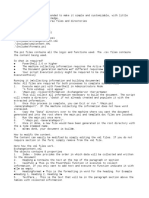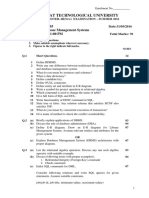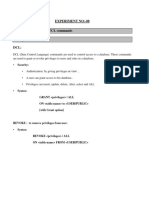0% found this document useful (0 votes)
8 views6 pagesModule-5 CSC 222 Database Normalization
Database normalization is a method for organizing data to eliminate redundancy and improve data integrity through a multi-step process. It involves several normal forms, including First Normal Form (1NF), Second Normal Form (2NF), and Third Normal Form (3NF), each with specific rules to ensure data is logically stored and dependencies are maintained. Without normalization, databases can suffer from issues like data redundancy and anomalies during insertion, updating, and deletion.
Uploaded by
uoladele99Copyright
© © All Rights Reserved
We take content rights seriously. If you suspect this is your content, claim it here.
Available Formats
Download as DOCX, PDF, TXT or read online on Scribd
0% found this document useful (0 votes)
8 views6 pagesModule-5 CSC 222 Database Normalization
Database normalization is a method for organizing data to eliminate redundancy and improve data integrity through a multi-step process. It involves several normal forms, including First Normal Form (1NF), Second Normal Form (2NF), and Third Normal Form (3NF), each with specific rules to ensure data is logically stored and dependencies are maintained. Without normalization, databases can suffer from issues like data redundancy and anomalies during insertion, updating, and deletion.
Uploaded by
uoladele99Copyright
© © All Rights Reserved
We take content rights seriously. If you suspect this is your content, claim it here.
Available Formats
Download as DOCX, PDF, TXT or read online on Scribd
/ 6





















































































